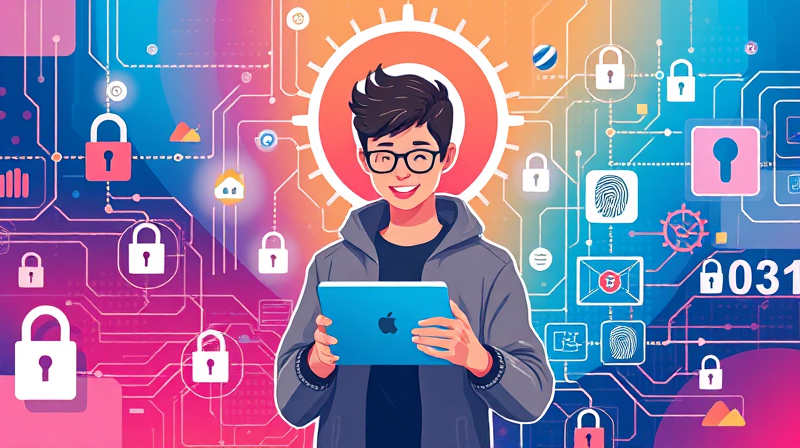In our increasingly digital world, safeguarding our online presence has become more critical than ever. As we move closer to 2025, digital innovations and evolving technologies continue to transform the way fraudsters operate. It is imperative to stay informed and proactive when it comes to online security. This article explores various methods that empower both individuals and organizations to detect suspicious activities and protect their sensitive information.
Online fraud comes in many forms such as identity theft, phishing scams, and complex financial fraud schemes. With each passing day, new techniques emerge that challenge traditional security measures. Nevertheless, a combination of advanced technologies, practical tips, and realizing the importance of cybersecurity can help build a robust defense. Educating yourself about the latest trends in fraud detection is the first step towards effective online security.
Enhancing Security with Modern Tools
One of the most effective methods to secure your accounts is by using advanced authentication techniques. Multi-factor authentication (MFA) is at the forefront of online security. Many banks, payment platforms, and financial institutions now integrate MFA to ensure that only authorized users have access to sensitive accounts. By activating MFA, you add an extra layer of security with either an authenticator app or hardware security key. This simple step can drastically minimize the risk of unauthorized access.
Another game-changing approach is the use of Artificial Intelligence (AI) and Machine Learning for fraud detection. These technologies are redefining how suspicious patterns and anomalies are identified. With AI's ability to analyze vast amounts of data in real time, banks and other financial institutions can quickly flag potential fraudulent activities. Such advanced systems not only help in immediate detection but also in learning from past interactions to bolster defenses against future fraud attempts.
- Regularly monitor account activity: Keeping a close watch on your bank transactions and setting up notifications can help you respond quickly to any unusual activities.
- Use secure networks: Connect only to trusted and secure networks, especially when entering sensitive information or performing financial transactions.
- Implement proactive software solutions: For businesses, investing in state-of-the-art fraud detection software can provide continuous monitoring and alerting, ensuring a swift response to potential threats.
It is also vital to be cautious about email communications and links that may appear untrustworthy. Cybercriminals often use deceptive emails to trick recipients into revealing personal or financial information. Establishing a practice of verifying sender details and avoiding suspicious attachments can save you from unnecessary risks.
Furthermore, maintaining up-to-date software is a critical yet sometimes overlooked aspect of digital safety. Frequently updating your devices, operating systems, and applications ensures that you benefit from the latest security patches. This practice significantly diminishes risks by covering known vulnerabilities before they can be exploited by fraudsters.
Deepfakes and AI-powered scams now represent a sophisticated emerging threat in the digital landscape. These scams can involve convincingly forged videos or messages designed to deceive. Users are advised to approach any form of communication that seems unusual, especially if it involves requests for financial transactions or sensitive data. Verifying the authenticity of such communications through alternative channels can disarm potential scams before they cause harm.
The cornerstone of online safety is also grounded in strong password practices. Create unique, complex passwords for each digital account. Consider using a reliable password manager to generate and securely store these passwords, which are otherwise too complex to remember. Regular updates to your passwords, particularly for financial and critical accounts, help maintain a secure digital environment.
Formal education in cybersecurity can be incredibly beneficial. By investing time to learn about the latest scams and fraud tactics, you not only enhance your personal online safety but can also help educate others. Whether it is family members, friends, or colleagues, spreading awareness can create a safer digital community. Knowledge is power, and staying informed is key to preventing inefficient responses to emerging threats.
Another major advantage in the fight against online fraud is the use of secure networks and Virtual Private Networks (VPNs). When engaging in activities that involve sensitive data or financial exchanges, ensuring that you are on a secure and encrypted network is vital. VPNs provide an additional layer of security by masking your internet connection and protecting your data from prying eyes.
Lastly, for organizations, implementing dedicated fraud detection software is non-negotiable. These software solutions continuously monitor for irregular activities, use machine learning to evolve their security measures, and often seamlessly integrate with existing systems. Businesses that invest in robust security infrastructure may find themselves one step ahead of cybercriminals.
Overall, a strategic approach to online security combines technology with good digital practices. Each measure, from MFA to timely software updates, contributes to a multi-layered defense system that significantly diminishes the risk of falling prey to fraudulent activities. By taking these proactive steps and remaining vigilant, you can securely navigate today’s complex digital environment and inspire others to do the same.
Embrace these best practices not just as precautionary measures, but as part of a broader commitment to digital empowerment. Your security is in your hands, and a well-informed community is the strongest defense against emerging online threats.








